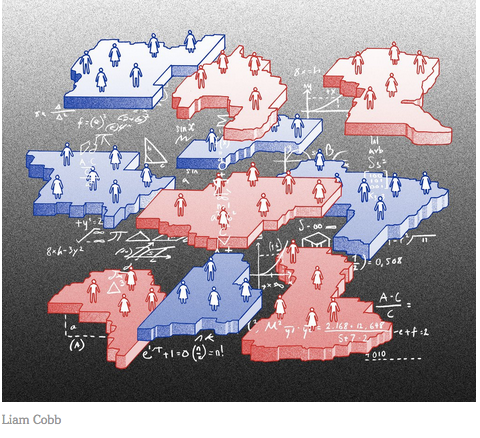When the overall Republican vote share in the state is 50 percent or more, the authors of the paper show, the map behaves much like an unbiased one. But when the map is tested by an electorate that leans Democratic, its special features kick in, maintaining a healthy Republican majority against the popular headwind. To gain control of the State Assembly, the authors estimate, Wisconsin Democrats would have to beat Republicans by 8 to 10 points, a margin rarely achieved in statewide elections by either party in this evenly split state. As a mathematician, I’m impressed. As a Wisconsin voter, I feel a little ill.
Republican legislators argue that any Wisconsin map will look biased, because Democratic voters tend to congregate in big cities like Milwaukee and Madison. That packs the Democratic half of the state into a small cluster of districts. “Why are you gerrymandering yourselves?” they ask.
They’re partly right. The clustering of Democrats in cities does indeed give the Republicans an edge. But it’s a much smaller advantage than the turbo-boost the current map provides, as the Duke paper demonstrates. The main tool in the Duke paper is a method called the “Markov chain Monte Carlo” algorithm. Starting from the current Wisconsin district map, it makes a sequence of random changes, swapping wards from one district to an adjacent one, carrying out a “random walk” through the set of all possible maps. Completely unconstrained changes would create crazy-looking districts, so it weights its changes in favor of traditional districting criteria.




